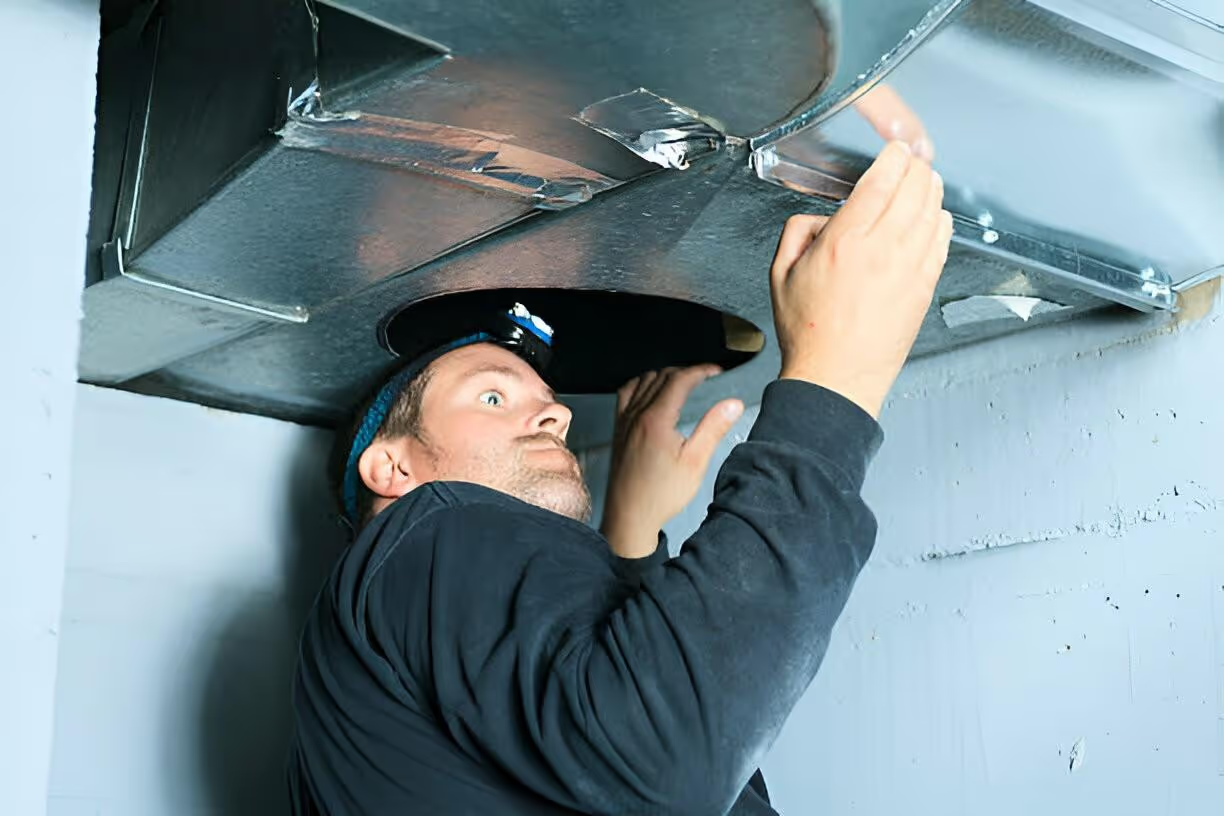Ductwork in Temple Terrace, FL


Why ductwork matters in Temple Terrace homes
- High cooling demand: Air conditioning runs most of the year, so duct losses have an outsized effect on energy bills and comfort.
- Attic and crawlspace exposure: Many local ducts run through unconditioned attics or crawlspaces where heat gain and humidity reduce system performance.
- Humidity and mold risk: Leaks and cold surfaces encourage condensation and microbial growth, impacting indoor air quality.
- Older systems and retrofits: Replaced HVAC equipment without redesigning ductwork often leaves ducts undersized or poorly balanced.
Addressing duct issues improves airflow, reduces runtime, enhances comfort, and lowers energy usage while helping control allergens and moisture.
Common ductwork issues in Temple Terrace, FL
- Leaks at joints, takeoffs, and boot connections that waste conditioned air and draw dust from unconditioned spaces
- Poor sealing and improper materials (e.g., cloth tape instead of mastic or UL 181-rated seals)
- Undersized ducts after HVAC upgrades, causing low airflow and short-cycling
- Inadequate insulation or damaged vapor barriers, increasing heat gain in attic ducts
- Poor layout or balancing that creates hot and cold rooms
- Collapsed or kinked flex ducts that restrict flow
- Corrosion or rust in metal ducts near coastal salt air, and microbial contamination where moisture accumulates
How proper sizing and sealing improve performance
Proper duct design and sealing focus on two things: delivering the required airflow to each room and preventing conditioned air from escaping before it gets there. Benefits include:
- Increased airflow to registers and more consistent room temperatures
- Shorter run times and lower energy use; in many Florida homes sealing and insulating ducts reduces duct-related energy losses by a meaningful percentage
- Less dust and allergen circulation because return-side leaks are minimized
- Reduced moisture infiltration and lower risk of mold inside ducts
- Improved equipment longevity because the HVAC system operates closer to its intended conditions
Duct sizing follows established load and duct design methods so that the system can deliver required cubic feet per minute (CFM) without excessive static pressure.
Inspection and diagnostic process
A thorough duct services engagement typically follows a structured inspection and diagnostic approach:
- Visual inspection: Assess accessible ducts, boots, insulation, and visible damage in attics, basements, and crawlspaces.
- Thermal inspection: Use infrared imaging to locate heat loss and poorly insulated runs in hot attic spaces.
- Pressure and leakage testing: Perform a duct leakage test to quantify total leakage and locate problem areas. This measures airflow lost from the duct system under standardized pressure.
- Airflow measurement and balancing: Measure supply and return CFM at registers and check static pressure to determine if ducts are sized and balanced properly.
- Contamination check: Inspect for signs of mold, dust buildup, rodent activity, or water damage that require cleaning or replacement.
Diagnostic findings are used to recommend targeted repairs, sealing, insulation upgrades, or a full redesign if needed.
Sealing, repair, replacement, and new duct design
- Sealing: Effective sealing uses mastic sealant and approved metal-backed tapes at connections, takeoffs, and registers. Sealing minimizes leakage at its source and is the most cost-effective first step in many homes.
- Insulation upgrades: Adding or replacing duct insulation and vapor barrier in attic runs reduces heat gain and condensation risk. Higher R-value insulation is recommended for ducts in unconditioned Florida attics.
- Repair: Small punctures, disconnected sections, and damaged boots can be repaired in place. Collapsed or severely kinked flexible ducts should be replaced.
- Replacement: When ducts are extensively corroded, contaminated, or fundamentally undersized, partial or full replacement is the best long-term solution. Modern sheet metal or properly installed insulated flex ducts deliver reliable performance when designed correctly.
- New duct design: For new systems or major replacements, a load calculation (Manual J) combined with duct design (Manual D) ensures correct equipment sizing and duct layout for balanced airflow and efficiency.
Installation and retrofit process and expected timelines
Typical timelines vary by scope:
- Inspection and testing: 1 day to complete a full diagnostic survey and leakage testing.
- Targeted sealing and small repairs: 1 to 2 days for a typical single-family home.
- Insulation upgrades and more extensive repairs: 2 to 3 days depending on attic access and the number of runs.
- Partial or full duct replacement and new design: 2 to 5 days depending on system complexity, number of stories, and whether drywall or finishes need alteration.
Work is planned to minimize disruption. In many cases, sealing and insulation can be completed quickly, delivering measurable improvements in the same visit.
Before and after performance testing
Verification is essential to confirm results:
- Duct leakage test: Measure total leakage before and after work to quantify improvements in CFM lost to the unconditioned space.
- Airflow testing: Compare supply and return CFM at key registers to ensure rooms receive designed airflow.
- Static pressure checks: Confirm the system is operating within safe static pressure ranges to protect equipment and maintain airflow.
- Thermal check: Use infrared scans to show reduced heat gain in attic duct runs after insulation and sealing.
These objective tests show how much leakage was corrected and how much airflow was restored, giving a clear picture of performance gains.
Maintenance and expected benefits
After sealing, repair, or replacement, routine checks every 2 to 4 years keep ducts performing well. Benefits Temple Terrace homeowners can expect:
- More consistent home comfort and fewer hot spots
- Lower HVAC run times and reduced energy waste
- Improved indoor air quality with less dust and fewer contaminants entering the system
- Lower risk of mold growth in ducts and reduced humidity-related issues
- Better longevity and efficiency from HVAC equipment
Addressing ductwork in a hot, humid climate like Temple Terrace is one of the highest-impact ways to improve comfort and lower energy use. Proper inspection, sealing, and design create measurable results in airflow and indoor air quality while solving the common problems local homes face.
Service Areas


